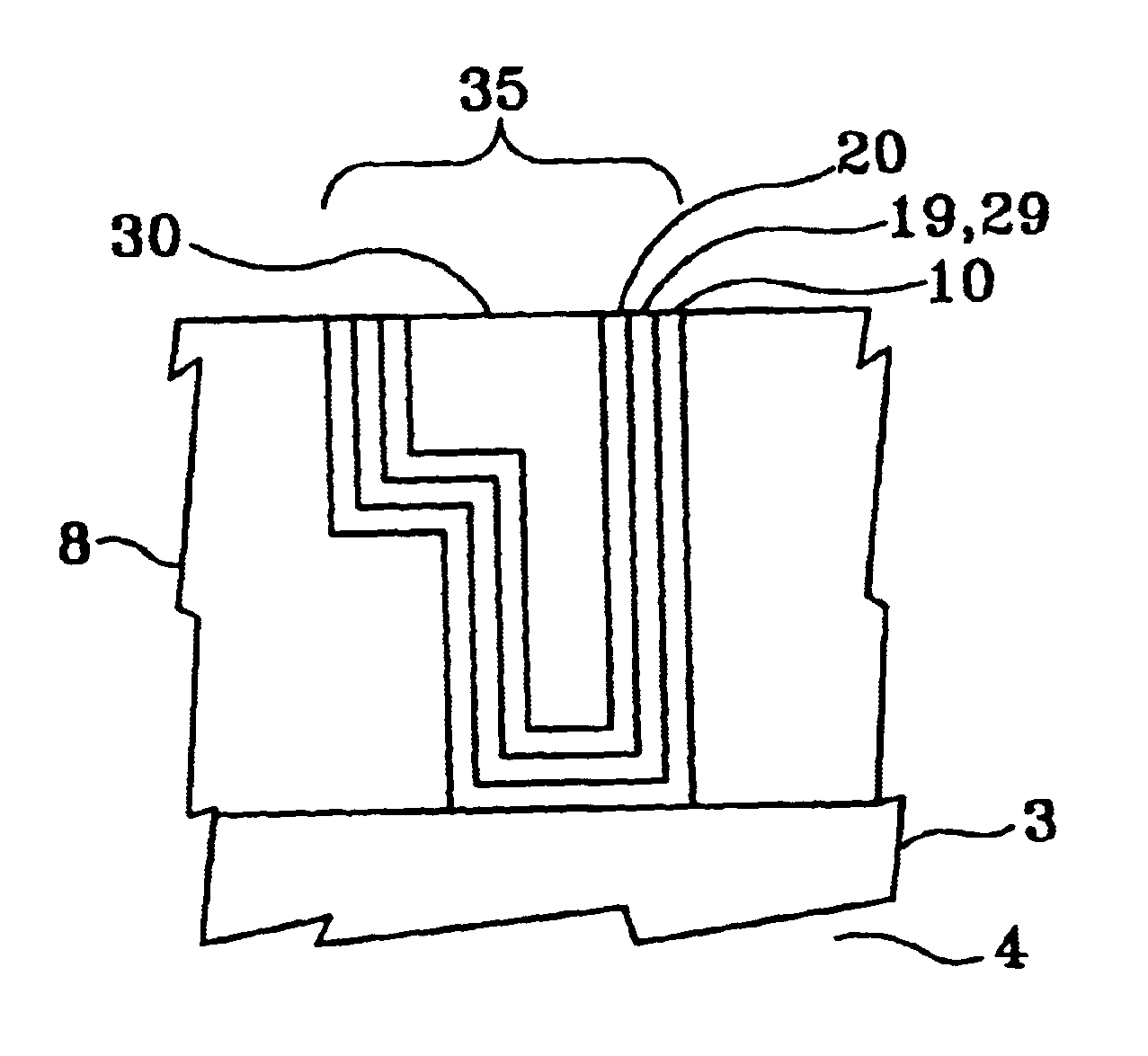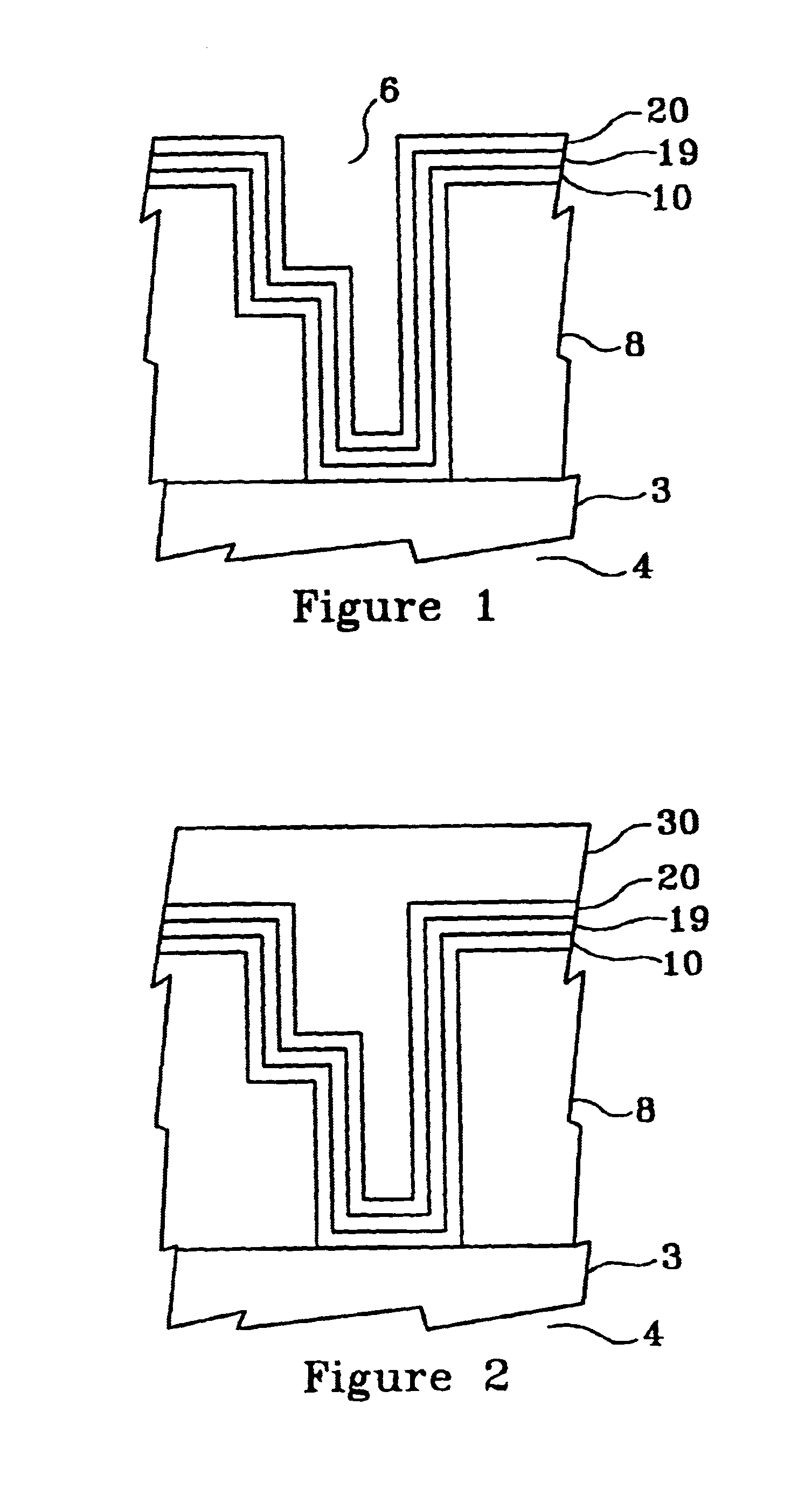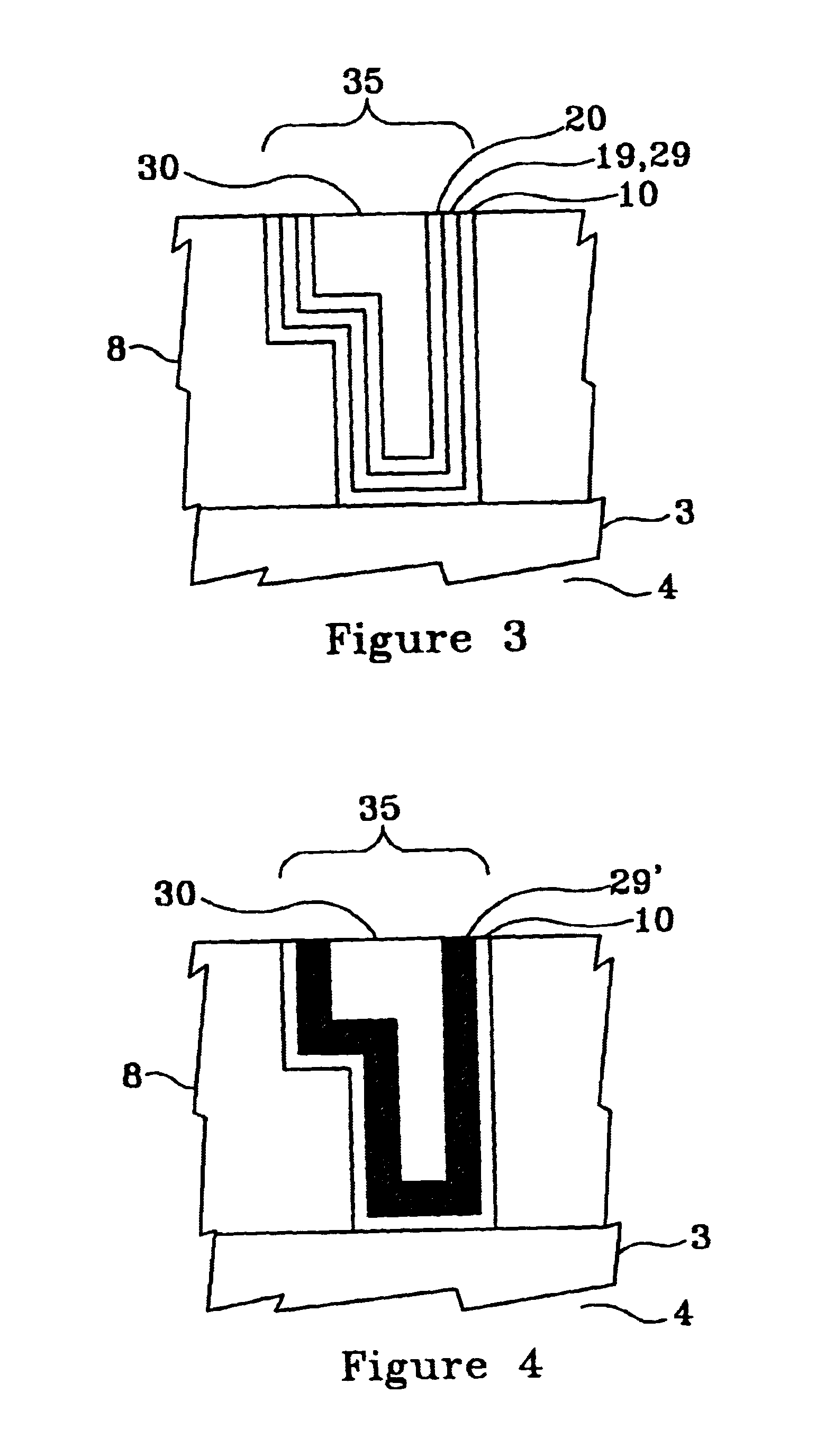Method of reducing electromigration by forming an electroplated copper-zinc interconnect and a semiconductor device thereby formed
a technology of copper-zinc alloy and interconnect, which is applied in the field of reducing electromigration by forming an electroplated copper-zinc interconnect and a semiconductor device thereby formed, can solve the problems of neither technique providing a cost-effective method of forming a copper-zinc alloy on a cu interconnect surface, and is less desirable as a candidate for these higher density devices, so as to reduce the electromigration in the device, improve the reliability and corrosion of the interconn
- Summary
- Abstract
- Description
- Claims
- Application Information
AI Technical Summary
Benefits of technology
Problems solved by technology
Method used
Image
Examples
Embodiment Construction
FIG. 1 illustrates, by example only, in cross-section, a Cu interconnect line 3 formed on a semiconductor substrate 4 and acting as the bottom portion of a via 6, the via 6 sidewalls comprising at least one low dielectric constant layer 8, in a dielectric constant range of approximately 1.6 to approximately 2.3, the via 6 having an optional barrier layer 10 formed by a technique such as chemical vapor deposition (CVD) or atomic layer deposition (ALD), comprising at least one material selected from a group consisting essentially of titanium silicon nitride (Ti.sub.x Si.sub.y N.sub.2), tantalum nitride (TaN), and tungsten nitride (W.sub.x N.sub.y) in a thickness range of approximately 30 .ANG. to approximately 50 .ANG., formed therein, an optional underlayer 19, comprising at least one material selected from a group consisting essentially of tin (Sn) and palladium Ed) and having a thickness of range of approximately 15 .ANG. to approximately 50 .ANG.(preferably approximately 30 .ANG.)...
PUM
| Property | Measurement | Unit |
|---|---|---|
| thickness | aaaaa | aaaaa |
| thickness | aaaaa | aaaaa |
| thickness | aaaaa | aaaaa |
Abstract
Description
Claims
Application Information
 Login to View More
Login to View More - R&D
- Intellectual Property
- Life Sciences
- Materials
- Tech Scout
- Unparalleled Data Quality
- Higher Quality Content
- 60% Fewer Hallucinations
Browse by: Latest US Patents, China's latest patents, Technical Efficacy Thesaurus, Application Domain, Technology Topic, Popular Technical Reports.
© 2025 PatSnap. All rights reserved.Legal|Privacy policy|Modern Slavery Act Transparency Statement|Sitemap|About US| Contact US: help@patsnap.com



